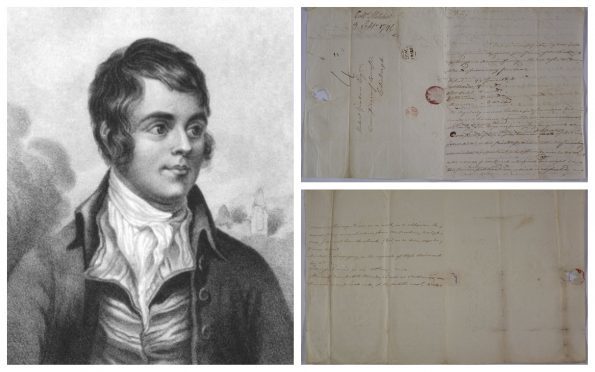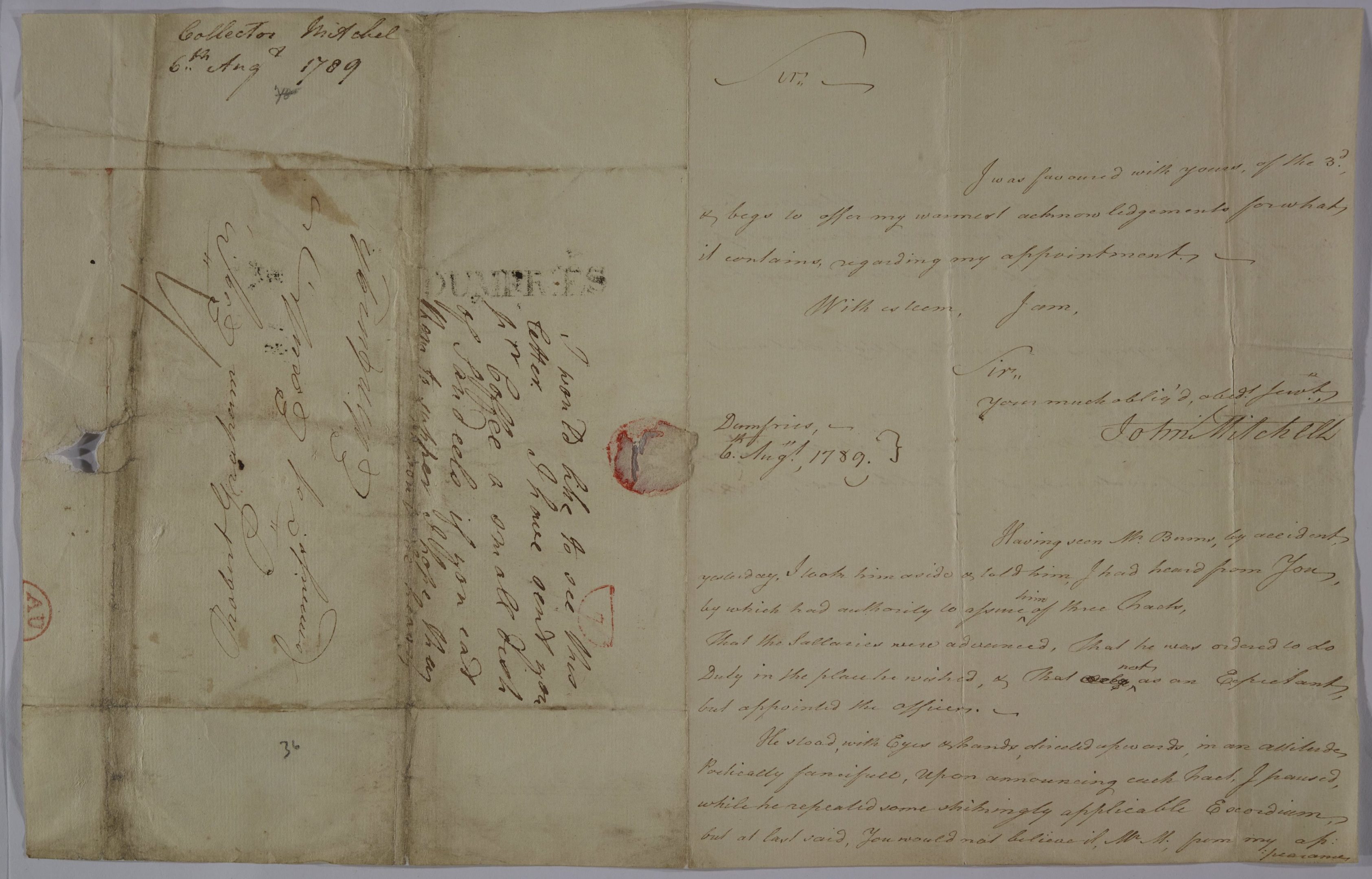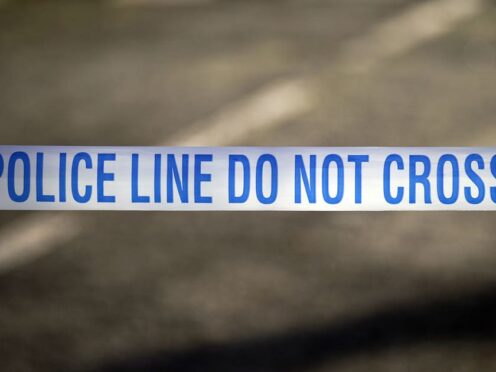Two newly-identified letters on display for the first time have given fresh insight into the extent of Robert Burns’ radical politics.
The letters, written by Burns’ boss John Mitchell to one of the poet’s most important patrons, Robert Graham of Fintry, reveal how the Bard was viewed by his contemporaries.
The first letter, written in 1789, describes how, on being told he had been appointed as an exciseman, Burns “stood with Eyes & hands, directed upwards, in an attitude Poetically fancifull.”
The second letter, from 1796, makes arrangements for providing for Burns’ family after his death and shows what Mitchell thought of Burns’ radicalism.
He writes: “He had certainly many shining qualities, blended with foibles of various kinds, the most irreconcilable whereof were his political principles, which somehow unluckily was rooted, & proves now a drawback to the humane feelings of many, but such a Genious as he possessed behoved to have eccentricities of some kind or other.”
Noted Burns expert professor Gerard Carruthers, Francis Hutcheson professor of Scottish literature at Glasgow University, said the newly discovered letters confirm how the poet found “an amenable space in which he could develop an increasing enthusiasm for political reform” during his time in the excise service.
“This is the paradox of his life in this period: government service and a potentially sceptical attitude towards government,” he added.
The documents form part of the Graham of Fintry papers, which were acquired for the nation by the National Records of Scotland (NRS) in 2009.
They are displayed for the first time as part of ‘Robert Burns: Radical Exciseman’, a free exhibition running in General Register House in Edinburgh from January 25 to February 23.
Dr David Brown, head of court, legal and private records at NRS said: “This is a rare opportunity to see documents about Robert Burns written by those who knew him, as well as a document in the poet’s own handwriting.”
International development minister Alasdair Allan said: “These newly-identified documents on display at National Records of Scotland shed a fresh ray of light on Robert Burns, his character, his beliefs and his career.”
Another letter, sent from Burns to one of his closest friends, William Niven, has gone on display today (THU) for the first time in more than 100 years.
The document, in which the Bard claims he never wanted to be famous, is on special display at the National Library of Scotland in Edinburgh to celebrate Burns Day.











